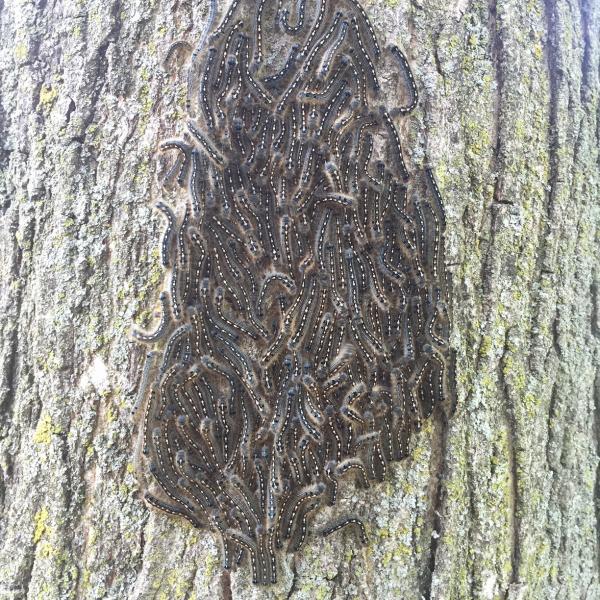
News Source
This spring we’ve had reports that populations of the native forest tent caterpillar (FTC)
are building in Windham, Windsor, Franklin, Lamoille, Orleans, and Rutland Counties. The
window of concern is May and June when the FTC larvae are actively feeding. Although caterpillar
development seems ahead of normal this year, there should be several more weeks
before they pupate, and defoliation will become more noticeable.
Trees that are particularly favored include sugar maple, ash and oak, but FTC feeds on
most deciduous species. Check your trees in late June. If defoliated, they should refoliate
within several weeks. Most trees can survive several years of defoliation.
Overwintering egg mass surveys can predict FTC defoliation for the following year. We are
available to conduct these fall and winter surveys for sugarmakers and timberland owners.
Egg hatch generally occurs as sugar maples break bud, but is staggered over several weeks
so you may observe caterpillars of different sizes throughout the season. Half-grown larvae
are sometimes seen congregating on tree boles or on man-made structures around homes.
Once they reach about 2 ½ inches in length, they stop feeding, form a cocoon in leaves,
bark, or other dark structures, and pupate.
When tree foliage is depleted, larvae migrate to other vegetation and become a nuisance to
homeowners. Even vegetable gardens may be consumed by this native insect when populations
are high. Caterpillars sometimes succumb to a malady known as Melt, Wilt, or Black
Death. Caused by a nuclear polyhedrosis virus (NPV), this disease is common during outbreaks
when the insects are in close proximity to one another.
Similar defoliation caused by other insects may complicate diagnosis. This year we’ve seen
an increase in eastern tent caterpillar (ETC). This close relative of FTC feeds on cherry
and apple, hatches a bit earlier, and can be easily misidentified as FTC. If the caterpillar is
associated with a “tent” and has a solid white stripe down the back, it’s an ETC. FTC larvae
have white, keyhole markings down the back. Forest tent caterpillars do not make a tent!
Click here for more information.
Article credit: Vermont Department of Forests, Parks and Recreation, Forest Biology Laboratory
Photo credit: Elise Schadler, VT Urban and Community Forestry